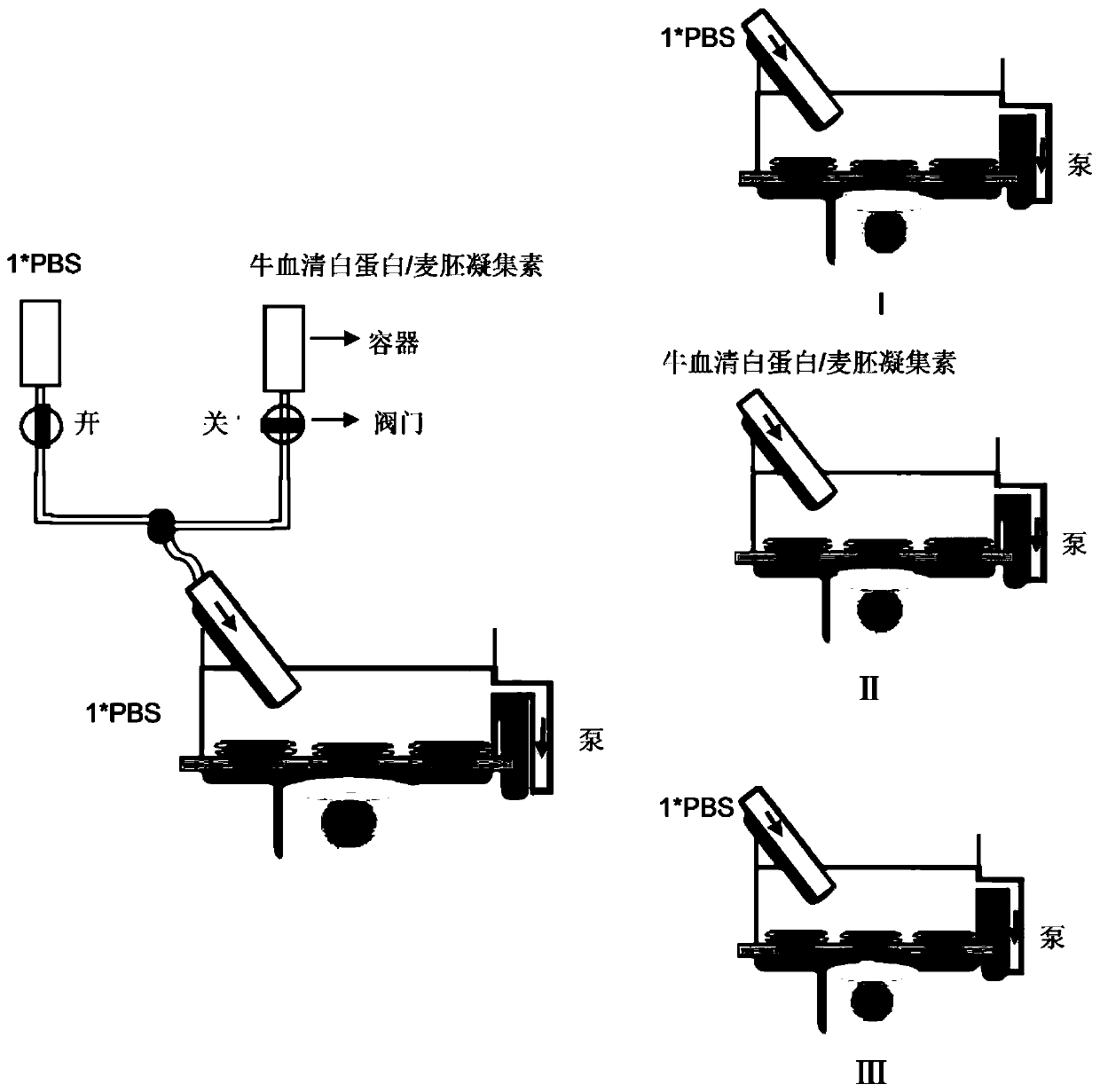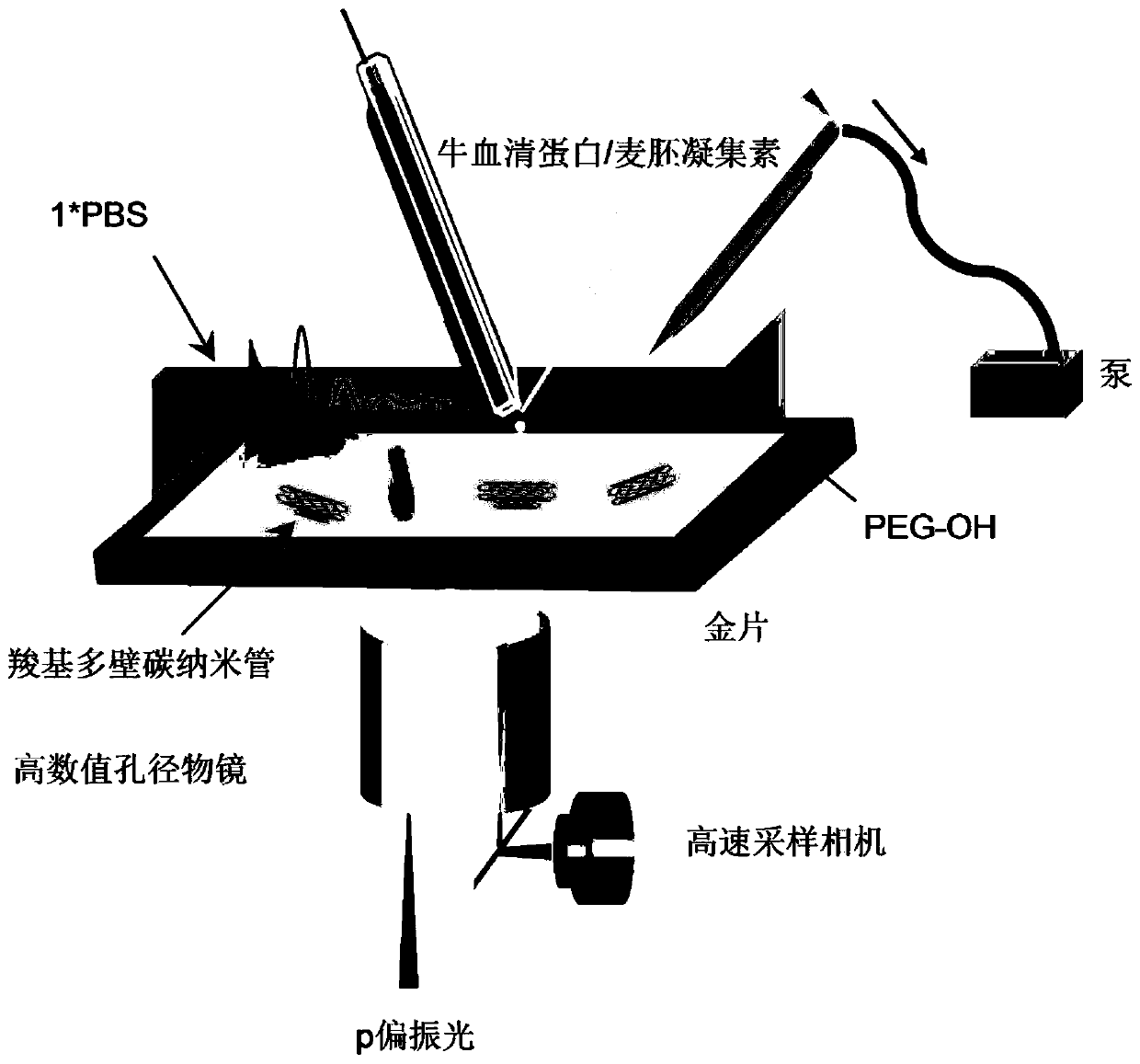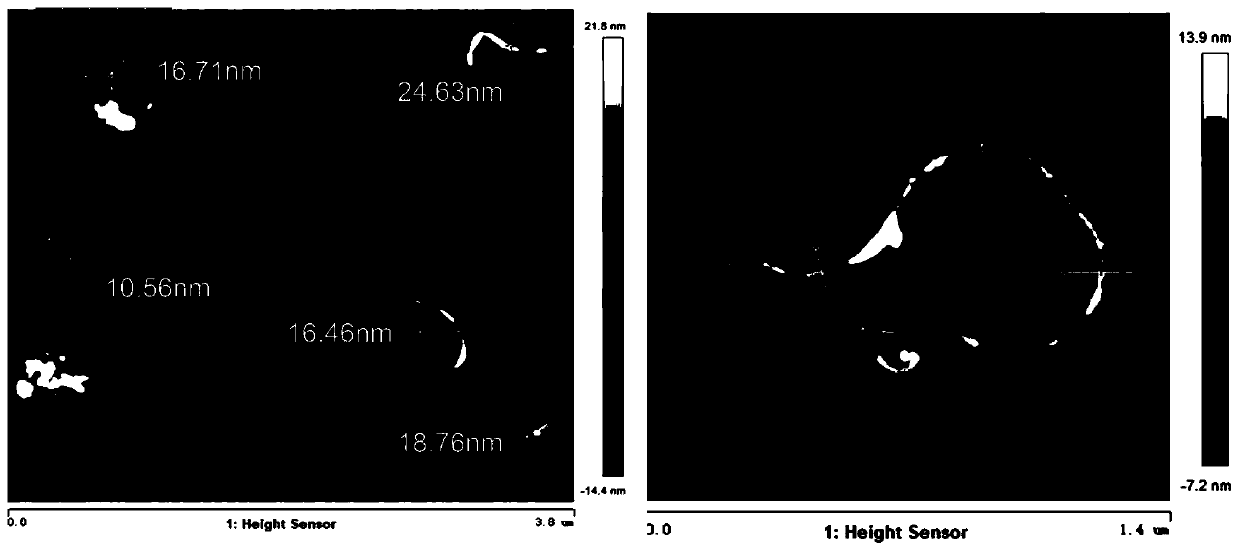Method for analyzing interaction between single carbon nanotube and protein
A protein interaction and carbon nanotube technology, applied in the field of biomolecular interaction, can solve the problems of unfavorable in situ observation, fluorescent label quenching and bleaching, and complicated sample preparation process, and achieve convenient and simple sample preparation and simple preparation method , The effect of simple detection method
- Summary
- Abstract
- Description
- Claims
- Application Information
AI Technical Summary
Problems solved by technology
Method used
Image
Examples
Embodiment 1
[0055] Example 1: Interaction of bovine serum albumin and carbon nanotubes
[0056] Detect the interaction between 0.01, 0.1, 1.0mg / mL BSA and three MWNT-COOH
[0057] (1): first coat a 2-3nm thick chromium layer on the upper surface of the glass substrate, then coat a 40-50nm thick gold film on the upper surface of the chromium layer; place the gold film in 1mM SH-PEG- Soak in OH (M.W.=340) ethanol solution at 0°C for 24 hours to form a uniform PEG-OH (M.W.=340) SAM layer on the surface as an SPR sensor chip;
[0058] (2): Take 10 mg of carboxy-modified multi-walled carbon nanotubes (MWNT-COOH) and ultrasonically disperse them in ethanol solution for 5 min, pass the solution through a water phase filter membrane with d=0.22 μm, and take 10 μL of filtered supernatant for spin coating On the SPR sensor chip, the carbon nanotubes were confirmed to be single and uniformly dispersed by atomic force microscopy (AFM);
[0059] (3): Cover the small PDMS pool on the SPR sensor chip,...
Embodiment 2
[0077] Embodiment 2: Interaction of wheat germ agglutinin (WGA) and carbon nanotubes
[0078] Detection of the interaction between 0.1mg / mL WGA and three MWNT-COOH
[0079] (1): first coat a 2-3nm thick chromium layer on the upper surface of the glass substrate, then coat a 40-50nm thick gold film on the upper surface of the chromium layer; place the gold film in 1mM SH-PEG- Soak in OH (M.W.=340) ethanol solution at 0°C for 24 hours to form a uniform PEG-OH (M.W.=340) SAM layer on the surface as an SPR sensor chip;
[0080] (2): Take 10 mg of carboxy-modified multi-walled carbon nanotubes (MWNT-COOH) and ultrasonically disperse them in ethanol solution for 5 min, pass the solution through a water phase filter membrane with d=0.22 μm, and take 10 μL of filtered supernatant for spin coating On the SPR sensor chip, the carbon nanotubes were confirmed to be single and uniformly dispersed by atomic force microscopy (AFM);
[0081] (3): Cover the small PDMS pool on the SPR sensor ...
PUM
| Property | Measurement | Unit |
|---|---|---|
| thickness | aaaaa | aaaaa |
| thickness | aaaaa | aaaaa |
| diameter | aaaaa | aaaaa |
Abstract
Description
Claims
Application Information
 Login to View More
Login to View More - R&D
- Intellectual Property
- Life Sciences
- Materials
- Tech Scout
- Unparalleled Data Quality
- Higher Quality Content
- 60% Fewer Hallucinations
Browse by: Latest US Patents, China's latest patents, Technical Efficacy Thesaurus, Application Domain, Technology Topic, Popular Technical Reports.
© 2025 PatSnap. All rights reserved.Legal|Privacy policy|Modern Slavery Act Transparency Statement|Sitemap|About US| Contact US: help@patsnap.com



